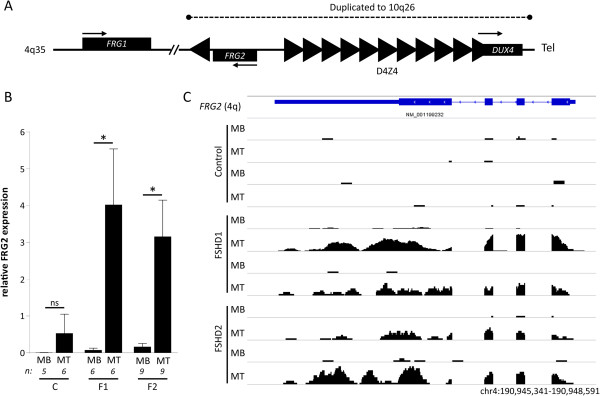Figure 1.

FRG2 activation in FSHD derived differentiating myoblasts. (A) Schematic representation of the FSHD locus on chromosome 4q35. Rectangles indicate the different genes, arrows their transcriptional direction. Triangles represent D4Z4 repeat units and the single inverted repeat unit upstream of FRG2. Each unit contains the full DUX4 ORF, only the last repeat unit produces a stable transcript in FSHD patients. The dashed line indicates the duplicated region present on chromosome 10q26. (B) qRT-PCR analysis of mean FRG2 expression levels in control (C), FSHD1 (F1) and FSHD2 (F2) derived proliferating myoblasts (MB) and differentiating myotubes (MT) shows the significant activation of FRG2 during differentiation only in F1 and F2 derived cells. Relative expression was determined using GAPDH and GUSB as reference genes. Sample numbers are indicated and error bars represent the standard error of the mean. Asterisks indicate significant differences based on a one-way ANOVA (P = 0.0014), followed by pairwise comparison using Bonferroni correction, NS = non-significant. (C) Genomic snapshot (location indicated at the bottom) of RNA sequencing data of two control, two FSHD1 and two FSHD2 derived proliferating myoblasts (MB) and differentiating myotubes (MT) confirms the full length expression of FRG2 in differentiating myotubes originating from FSHD individuals.
